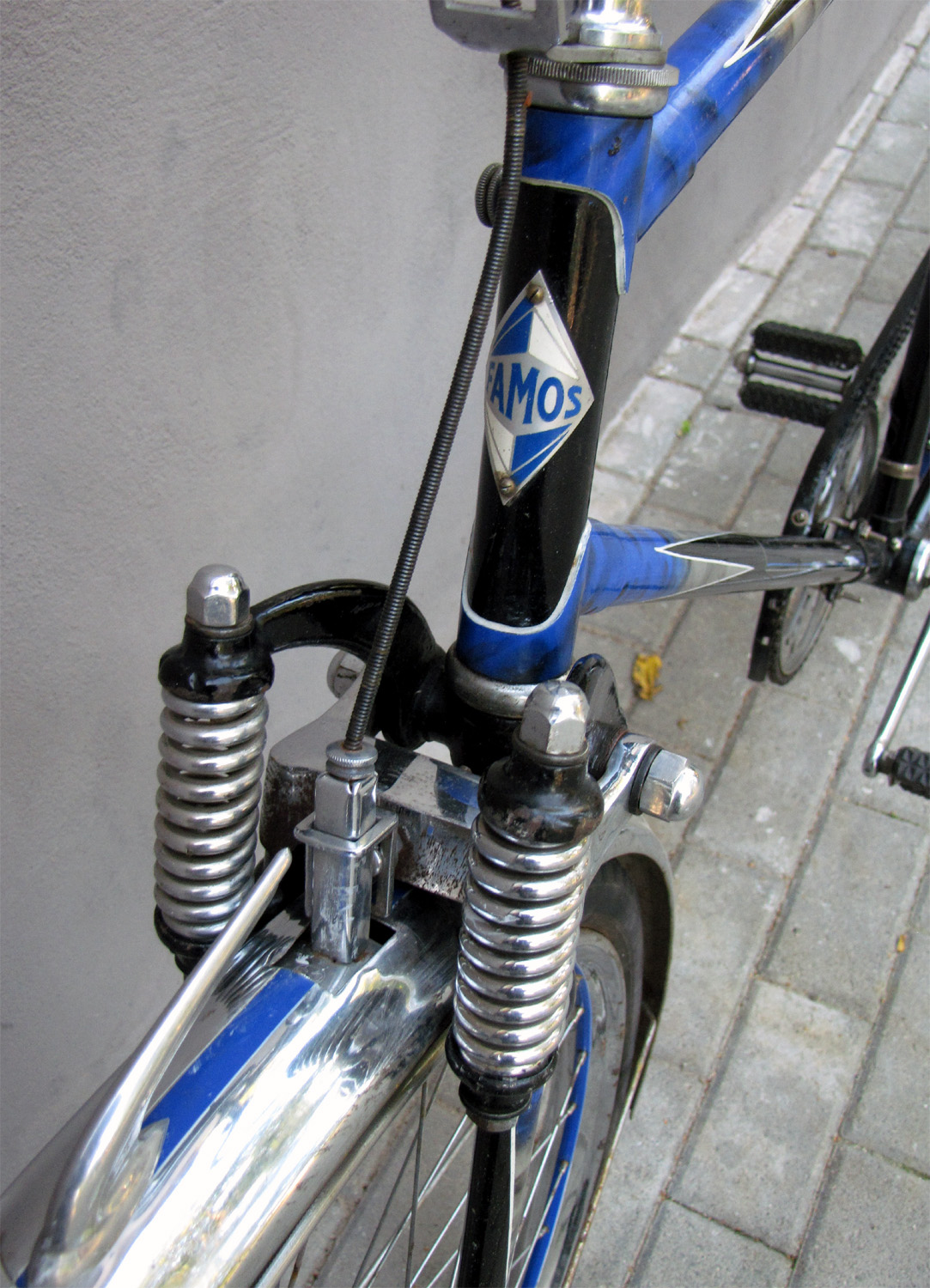Suspension
It is a common assumption that the front fork suspension in bicycles is an invention of the late 20th century. In fact, it already existed in the early 20th century, although not widely used. All the basic types of suspension were present by the 1920s-30s, they were only used in motorised or special-purpose bicycles, and as optional equpiment for ordinary bicycles.
The most typical method of front fork suspension was to mount the entire fork on a joint and add springs to it. Joint was then equipped with either tension coil springs (placed at the rear of the fork, and used for example in the 1960s in motorised bicycles Gauja), compression coil springs (mounted in the front part of the fork, used in the 1930s in motorised bicycles as well as in some regular bikes, e.g. Famos, made in Saar factory in Estonia), or leaf springs at the sides of the fork (used as optional equipment in the 1930s).
There was also an option to add to the lower part of the fork either short whisbones with incidental springs (used in the 1950s-60s in power-assisted bicycle B-901) or long whisbones with long external spring (often used in the 1930s as optional equipment, frequently self-made).
In the 1920s-30s, German bike manufacturer Anker used sickle-shaped fork made of steel coil spring – so-called sickle fork (Sichelgabel, Sichelrad in German), which swayed a little when riding.
Addition of rear wheel suspension was rather complicated in the early decades (the spacing between pedal shaft and rear wheel shaft had to remain the same when sprung) and these solutions were seldom used. Rather durable solution was used in German bicycle from the 1930s, Super Elastic, where the upper blade of rear fork was missing altogether and lower blades were made of special steel coil spring.
All above mentioned suspension systems were available in Estonia already in the 1930s, but only a few bikes had them. Front fork suspension became widespread only in the late 1950s, after introduction of a special motorised bicycle.

